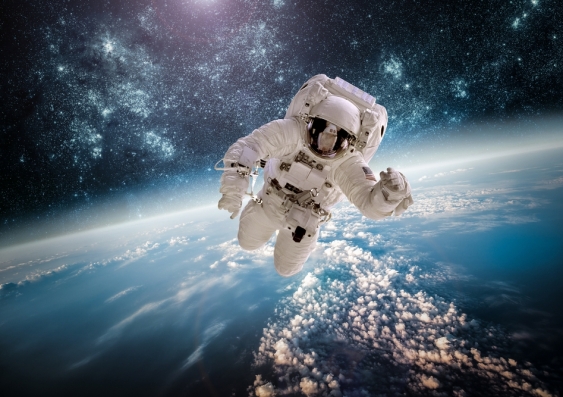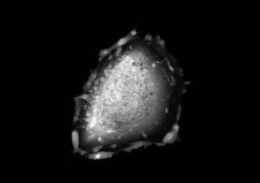What does space travel do to our cells?
UNSW Sydney scientists are exploring the effects of microgravity – the condition where people or objects seem to be weightless – on mammalian cells.
UNSW Sydney scientists are exploring the effects of microgravity – the condition where people or objects seem to be weightless – on mammalian cells.

UNSW medical researcher Associate Professor Kate Poole and her team are set to investigate how our cells sense changes in gravity as we travel out of the Earth’s atmosphere, thanks to a two-year research grant from the United States Air Force Office of Scientific Research.
Space travel can be tough on the body. During and after space missions, astronauts experience health problems ranging from loss of bone and muscle mass to weakened immune function and vision problems. While there are some studies on the physiological effects of microgravity on the body, the underlying cellular mechanisms of these changes – and how cells in the body actually sense diminished gravitational forces – remain elusive.
“This is a project that we’ve wanted to get off the ground for a couple of years. With this funding, we can start addressing the question of whether a particular class of protein sensors – called mechanically gated channels – are involved in sensing changes in gravity,” says A/Prof. Poole, a researcher at UNSW Medicine & Health’s Single Molecule Science, and School of Medical Sciences.
This project will build on the expertise her research team has developed in how cells sense their physical surroundings in a way that affects their function.
Mechanically activated channels are a class of pore forming membrane proteins that are triggered to open and close by molecular scale physical forces. The opening of channels allows ions into the cell to initiate an electrical signal. Proteins – including TRPV4, PIEZO, TREK-1 – detect mechanical signals from the surrounding environment and relay that signal to induce changes in cell shape and movement, their association with other cells, and other behaviours.

A mechanically-responsive cell that A/Prof. Poole and her team will use to study how mammalian cells sense.
With this funding, the research team will investigate whether the same cellular pore channels that sense physical forces – like vibrations, touch or stretch – are also involved in detecting gravitational pull.
Ready to hit the ground running with plans to use mechanically-responsive cell systems that they have previously studied at UNSW, the researchers will explore the effects of microgravity on cell shape and function.
“We want to see if the cells change their structure or behaviour in response to microgravity, and if these changes rely on mechanically activated ion channels,” says A/Prof. Poole.
To simulate microgravity conditions, her team will maintain cell cultures inside a random positioning machine, a device designed and built by bioengineer, Dr Joshua Chou. A collaboration with Dr Chou of University of Technology Sydney is at the heart of this project.
A/Prof. Poole says it is important to understand the impacts of space travel on the body if we are looking to expand on space exploration or begin commercial spaceflights.
“If you were thinking about sending people out to Mars, and then bringing them back, without any intervention, it is likely that when they come back to Earth, they would suffer spontaneous fractures in their bones because there would have been significant bone wastage. Structurally, the bone will not be able to bear the force of the Earth’s gravitational forces anymore,” she said.
For astronauts to be able to spend longer periods out in space, there might be opportunities to mitigate the negative health impacts of prolonged exposure to microgravity with therapeutics. A/Prof. Poole said to do that, we needed to first identify the mechanisms involved.
“Currently, we simply do not know which molecules in the cell are sensing the change. So, if we are to try to design any kind of intervention to target the sensor molecules, we need to know what they are.”